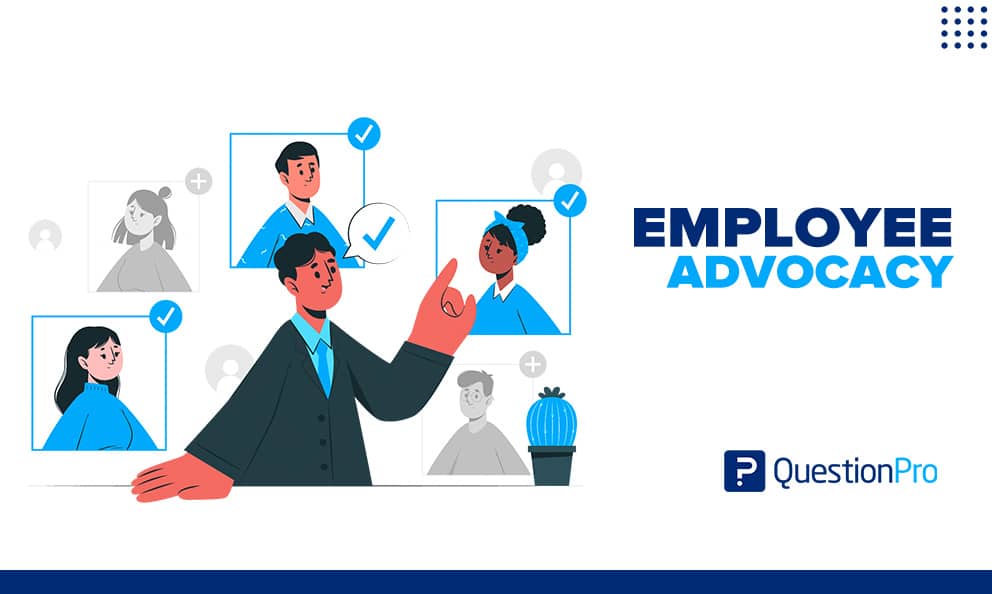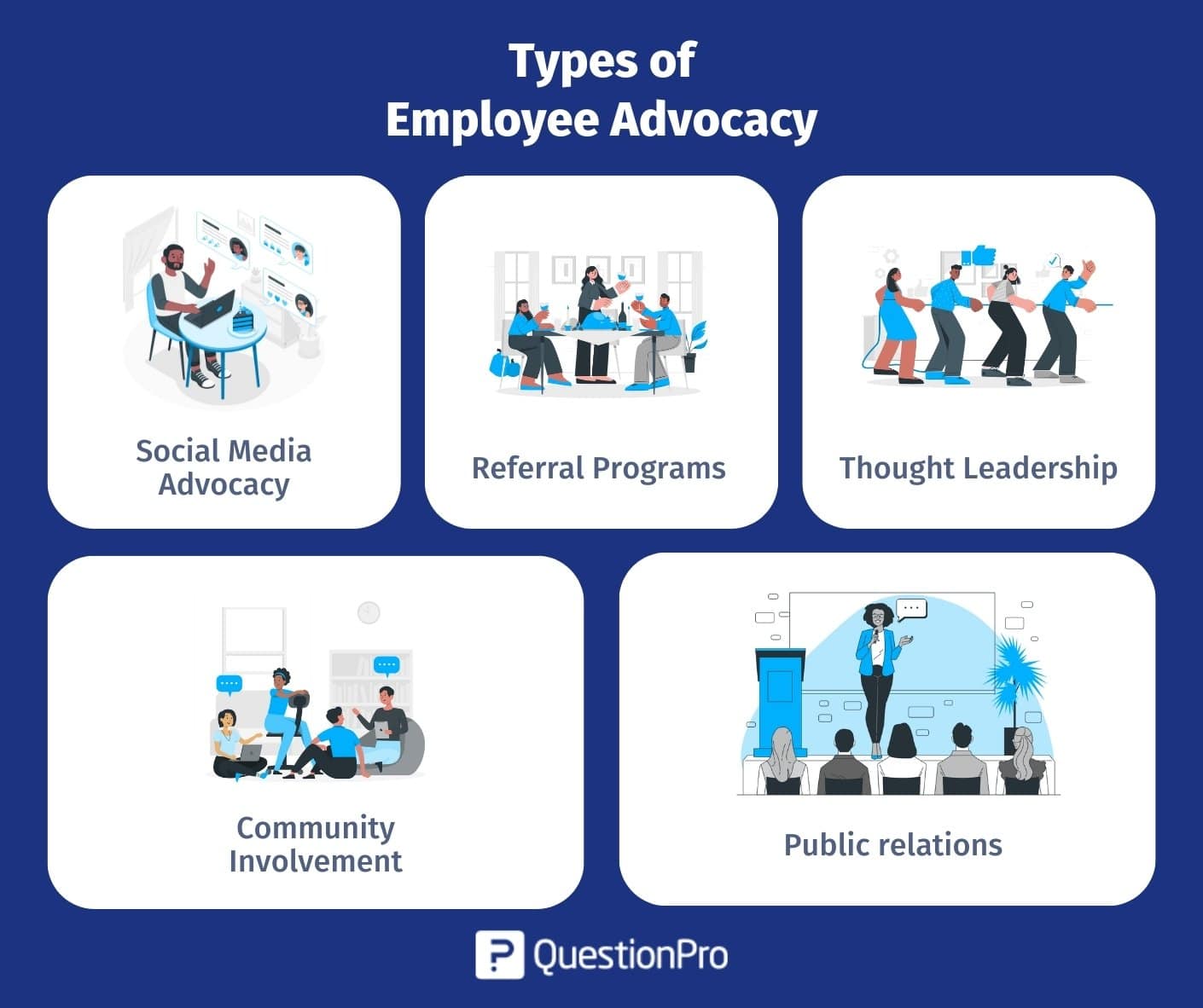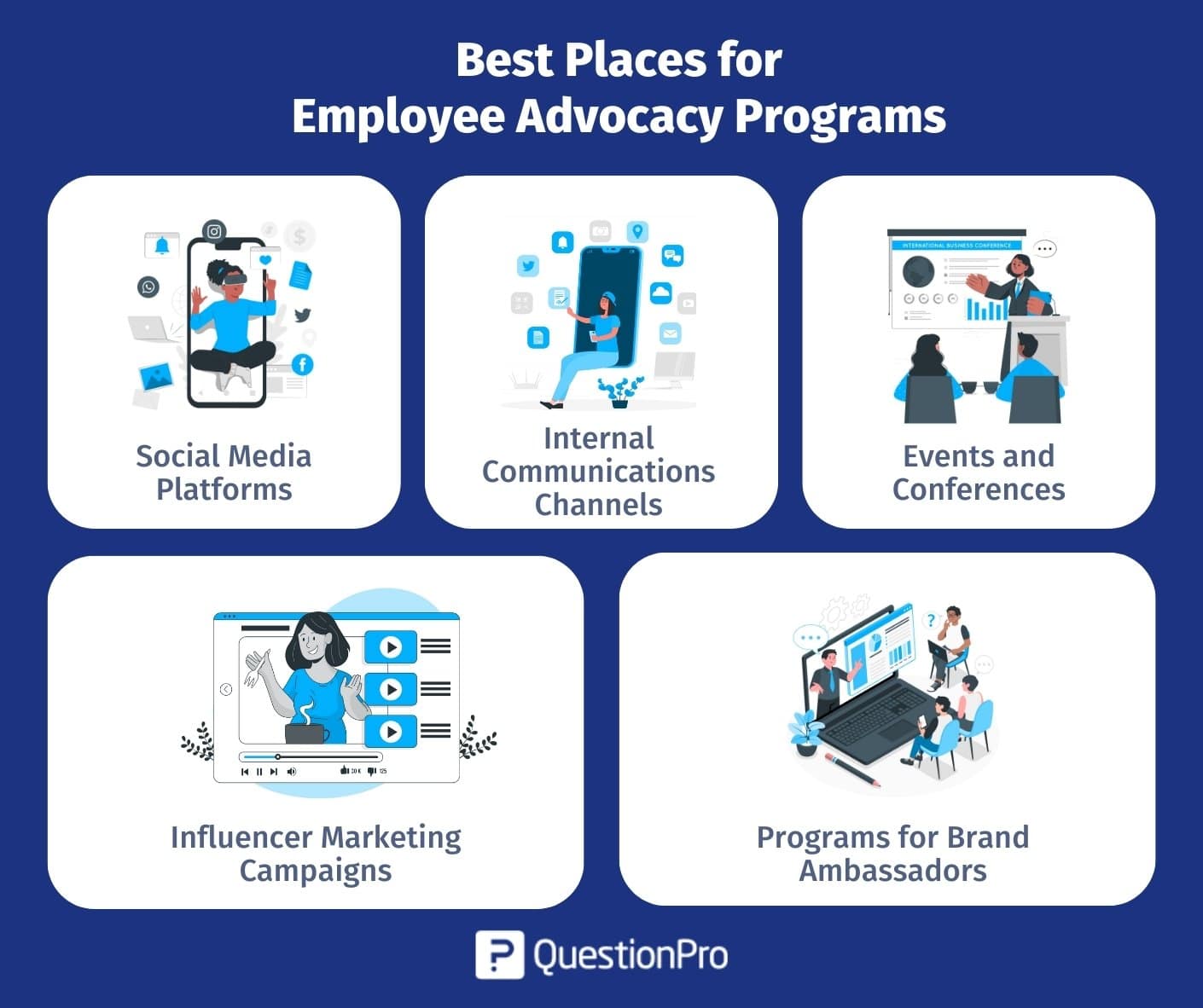
Employee advocacy is one of the best ways to improve your public image and get your employees more involved.
Why? Because your workers already talk about you on social media. Half of all employees share content from or about their workplace on social media, and 33% of all employees do this without being asked to.
This is great. But without a content plan to guide them, you don’t know what they’re posting or how well their efforts are paying off. With a formal employee advocacy program, you can improve your organic reach by 200% and make 23% more money, among other things.
Engaging your employees as advocates for your brand provides several benefits to your company. Like Google, companies that care about their employees go to great lengths to attract (and retain) their talent. Companies can invest in their employees and keep them engaged by offering top-notch services and benefits.
But another way to keep them engaged is to have them participate in a structured employee advocacy program.
Find out what employee advocacy is and the advantages of developing an employee promotion program in your company. This blog explains what employee advocacy is, its benefits, and how to implement it in your organization.
What is employee advocacy?
Employee advocacy or employee defense are awareness programs designed to mobilize and empower employees to defend their company and their brands on social media and, in fact, to be true brand ambassadors.
Employee promotion programs encourage them to participate in communication efforts and share valuable content from your company on their social networks.
Successful employee advocacy programs promote team morale, enhance employee productivity and workplace culture, assist firms in maintaining control over the brand message, position employees as thought leaders, make it simpler for HR to recruit and retain top talent, and generate revenue. The success and growth of a business depend heavily on employee advocacy.
Types of employee advocacy
Employees can become employee advocates in a few different ways. Some don’t even need a written plan. Your company may already be doing them.

Social media advocacy
This involves workers sharing company content or their own thoughts and views on social media sites like LinkedIn, Twitter, Facebook, and Instagram.
Referral programs
In this type of advocacy, employees send their friends, family, and other acquaintances to their company to apply for jobs or buy goods or services from the company.
Thought leadership
Employees who are experts in their area can share their knowledge and insights through blog posts, whitepapers, and other thought leadership content that helps their company and company culture become a thought leader in its industry.
Community involvement
Companies can encourage their workers to take part in local community events, like charity runs or food drives, to build relationships with local people and promote their brand.
Public relations
Employees can share their company’s message and beliefs with the public by giving interviews to the media or speaking at events.
Employee advocacy can help spread the word about a brand, boost a company’s image, and grow sales and revenue.
Tips for creating an employee advocacy program
Here are four tips to encourage your employees to become brand ambassadors and talk about the company independently on social media.
1. Set up a simple plan
Every business is unique. Putting together a simple plan covering the why and the what is a great way to start with employee support. This plan will not only help you get people on board with a program, but it will also help you choose the right partner.
Most importantly, your plan should lay out your goals:
- What does success look like, and why is that?
- Do you want to reach more people with your business and lower the cost of paid spend on social media?
- Do you want to give your salespeople more tools to help them increase their leads and shorten their sales cycles?
- Do you want to keep more employees and find new ones?
We’re all for having an employee advocacy program just because, but the more you can tie your program to real, solid goals, the bigger effect you’ll have on the business.
2. Secure the support of your executives
Executive support is essential for the success of any initiative. Therefore, reach out to the CEO if possible. Is your CEO not social media-savvy?
No problem—find others in sales, marketing, communications, and HR. Most crucially, your boss or your boss’s boss—the one who will approve the program and sign the check—must be on board since they’ll sell it to the executive team.
Executive support means what? Reach out to other departments and their teams!
Include CEOs in your first group of consumers, especially if they want to increase their public profiles (what executive doesn’t?). Answer: they all do) and you win because they can disseminate your program to their teams and lobby for greater resources. You should be able to recruit a few right away.
3. Find your first customers
Employee advocacy programs don’t go from having no users to having thousands of users on the first day. Some do, but it’s enough to say that those companies already know how to start a large-scale program and have the tools to do so.
Most people should start with something on the smaller side. It’s important to show success at every step. An employee support program doesn’t have a set length of time, and if you start out too fast and fail, it will be hard to get back on track.
Most employee advocacy events start out with a few hundred people on average. Who should then be those users? They should be employees who are already using social media, ideally in a professional capacity (which means they see the value in it).
Not only will you not have to train these people, but they will also be great role models for everyone else you ask after your initial launch. These early adopters are important because they will give you good feedback, make the program more known, help you find more users, etc. Start with a solid foundation.
Some employees do it very well and know the codes of the different social networks. But this is not the case for everyone. Some are newbies and need help. Offer them a guide for proper social channels, and help them correctly use LinkedIn or Twitter, the two most professional social networks.
You can also help them optimize their profile by updating their bio and experiences and making them participate in shooting for a suitable profile photo.
Lead by example by sharing content on your social accounts to encourage employees to become brand ambassadors.
5. Create content
To be successful in your employee advocacy program, the company must, of course, create quality content. Otherwise, the employees will have nothing to share.
The content must be attractive to your employees. Otherwise, they will not want to share it. Make content that creates value for your audience but also for your employees. They should be proud to stream this content.
6. Curate the content
Also, think about curating external content by sharing it. Industry news, for example. Here are some curated tips for creating an employee advocacy program:
Align your program with company values and goals
Ensure that your employee advocacy program is aligned with your company’s values and objectives. This will ensure that your employees promote the right message on behalf of your organization.
Choose the right platform
Select a social media platform that aligns with your brand and your audience. For example, if your target audience is on LinkedIn, focus your efforts there.
Provide engaging content
Offer your audience interesting, relevant, and useful content. This will encourage your employees to share the content with their followers.
Make it easy for employees to participate
Provide your employees with easy-to-use tools and resources, such as pre-approved content or a social media calendar, to make it simple for them to participate.
Encourage participation
Encourage participation in your employee advocacy program by recognizing and rewarding those who participate. Consider offering incentives, such as prizes or bonuses, to motivate employees to engage with the program.
Monitor and measure
Track your program’s success by monitoring engagement, click-through rates, and other metrics. Use this data to make informed decisions and refine your program over time.
By following these tips, you can create a successful employee advocacy program that helps build brand awareness, increase engagement, and drive business results.
Best places for employee advocacy programs
An employee advocacy program can work if your company has over 500 workers. Some companies like the idea of getting all of their workers involved from day one, which is fine, but there are a few places where employee advocacy works especially well.
These would be marketing, sales, human resources, hiring, and public relations and messaging. All of these things have in common that they mostly involve talking to and working with people outside of your company.
Depending on the nature and goals of the program, the employee advocacy program can be run on a number of right employee advocacy platform, sites, and channels. Here are some of the best places for programs that help employees speak up:

Social media platforms
Employee support programs work well on social media platforms like LinkedIn, Twitter, Facebook, and Instagram. These platforms have a wide reach and let employees share business content and messages with their networks.
Internal communications channels
Employee engagement programs can also use internal communications channels like company intranets, newsletters, and chat apps. These channels are perfect for sharing company news, employee stories, and other content that is important to the workforce.
Events and conferences
Employees can show off their skills and promote the company at events and conferences. Employees can network, build relationships, and support the company’s brand by going to industry events and giving talks.
Influencer marketing campaigns
Employee advocacy can be added to influencer marketing campaigns by partnering with employees with a large social media following or who are influential in their field.
Programs for brand ambassadors
A successful program for brand ambassadors can be a good way to use employee support. In these programs, employees are chosen and trained to be brand ambassadors who share company material and messages with their networks.
The best place for employee advocacy work will vary depending on the organization’s goals, target audience, and funding. Organizations can make a successful employee advocacy program by choosing the right channels and sites and making the program fit the needs of the company.
Advantages of having an employee advocacy program
Involving employees in a promotion program shows that you have faith and trust in them to act as agents on behalf of your company.
Nothing builds employee loyalty more than allowing them to share information—both company-created content and quality third-party content—on their various social networks.
Those in charge of your company’s social networks can be in charge of the quality and content so that it is per the policies and values of the organization.
Among the benefits of employee advocacy are the following:
Employees become promoters of your industry
By allowing your employees to champion your company on social media, you show that you are interested in building their brands.
Once again, this lets your employees know you trust them to promote the company to their networks.
LEARN ABOUT: Employee Trust
If you don’t believe in your company’s overall vision and culture enough to allow your people to promote the company without feeling threatened, it’s time to reevaluate your priorities.
Make the necessary changes to enable your employees to become your most valuable brand advocates.
Find out how to get brand advocacy and increase sales:
- Provide customers and prospects with real and meaningful interaction
Another advantage of having your own employee advocacy program is that friends and colleagues of employees on social networks know your employees on a personal and professional level. More and more people consult social networks before buying a product or service; your networks are a valuable resource for them.
Consumers trust social media because they know they will not get answers or recommendations from some company-trained bot. As individual networks of employees begin to see them as industry experts, the rest of the people can trust the recommendations and insights of the employees. This is good for your employees and for your company.
- When employees post on social media, you get a different view than your company does
This is a great reason to harness the powers of your employee advocacy program. Employees don’t have to play by the same rules as corporate social media accounts when interacting with personal social media.
Employees should indeed be careful about disclosure rules. Still, employee disclosure doesn’t take anything away from a true employee advocate if they’ve built themselves as an industry thought leader among their peers.
LEARN ABOUT: Employee Care
Conclusion
Creating an employee advocacy program is indeed hard work, but remember to remember the benefits mentioned above as you work on these advocacy efforts. In the end, everything will pay off.
Allow your employees to become digital ambassadors of your brand. This has a positive impact on the image of the company.
Employee advocacy tools can be a useful part of a company’s marketing plan, and using tools like QuestionPro can make it even more effective.
QuestionPro-powered employee advocacy programs can help companies find the right advocates, give them the training and tools they need, and track and measure the program’s progress.
With QuestionPro’s advanced analytics and reporting features, organizations can learn a lot about how their program is doing and make decisions based on the data to improve and improve the program over time.
With the help of QuestionPro, companies can make the most of their success in this area. A successful Employee Advocacy program can help organizations brand awareness, build credibility, and drive business results.







